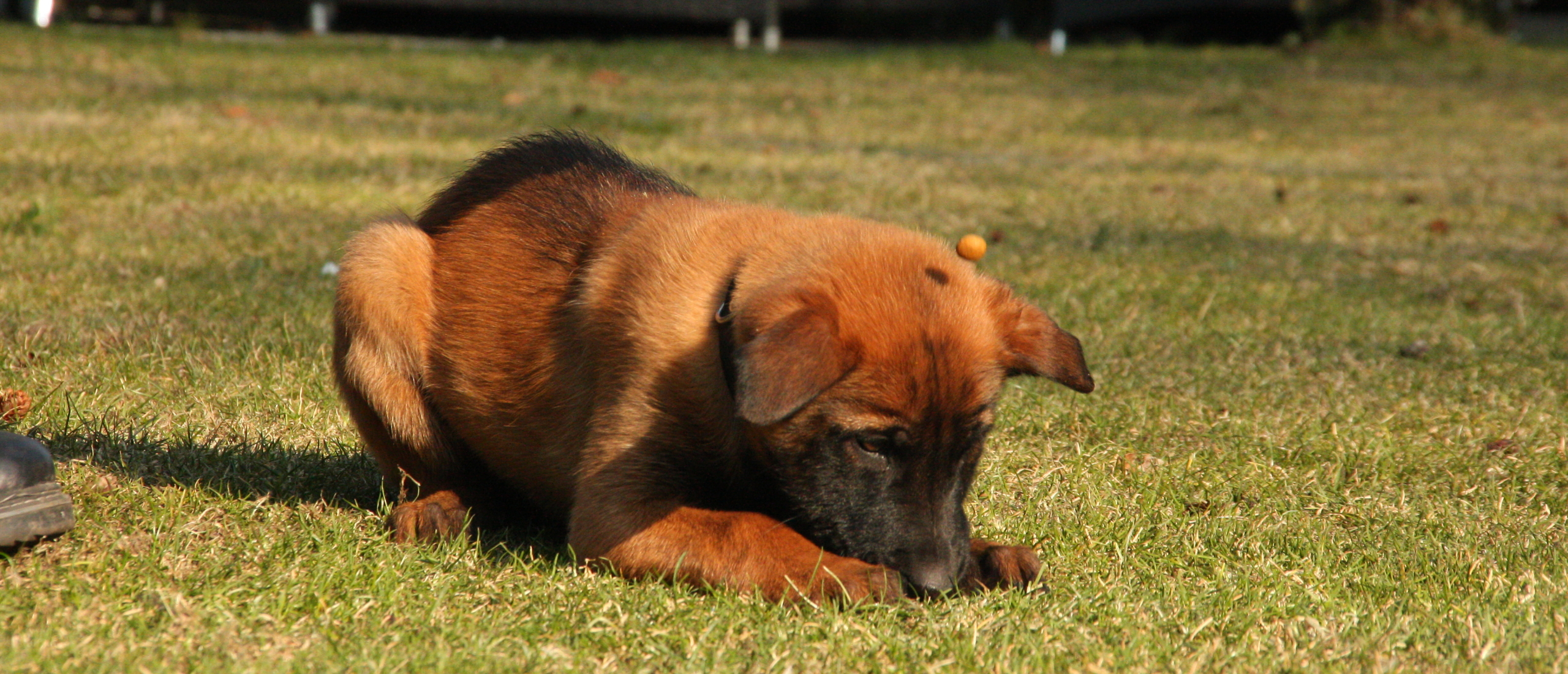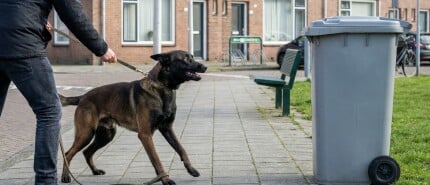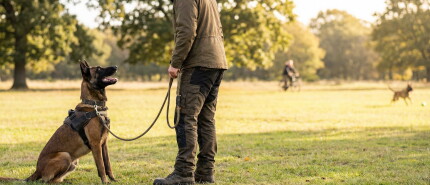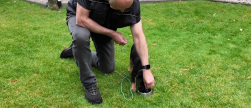There are a huge variety of opinions and theory about training with food. Many trainers don't train with food because they think the dog should work for his boss and not for a piece of food. I partly agree with this, because once the dog is trained and understands the exercise, the dog should of course listen to me and I don't want the dog to only listen to get his food reward. However, during the learning phase of exercises I am 100% convinced of the benefits of training with food.
Train with all the dog's food
When consistently using a food training system, you bring the dog back to where he came from a long time ago. His animal instinct, where he has to do something to get his food. We do this by not feeding the dog in a normal way, but to divide all his eating moments of the day, into training sessions. So we use all the food the dog normally eats in a day, during 2 or 3 training sessions.
Every piece of food during training is one repetition of an exercise we are training at that time. Depending on how much your dog eats and how big the food is, you will soon have 50 pieces of food and therefore 50 repetitions during a training session. In one day this will already be about 150 repetitions that you can do while training your dog.
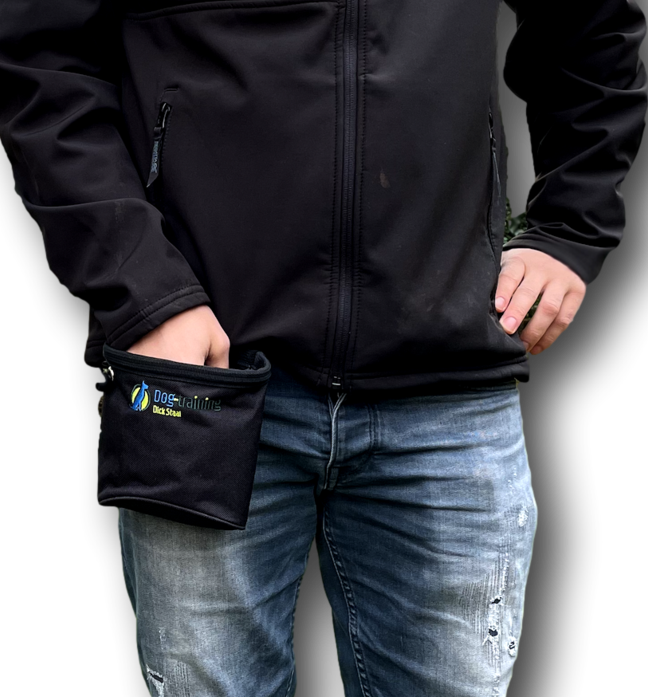 While training, always have a good feed bag or coat pocket that allows you to always have the food readily at hand.
While training, always have a good feed bag or coat pocket that allows you to always have the food readily at hand.
The dog can think well during learning
In addition, you train with food on low drive. This means that the dog is not too excited and can think clearly during training. The reward moments are short because the dog eats the food quickly and you can start again immediately. If you would teach an exercise with for example a ball as a reward, you are training for on high drive. The ball is often the ultimate reward for the dog and he will do anything to get it directly. Because of this, he is often unable to think properly because the excitement is very high. Also, the moment of rewarding with a ball is much longer because you cannot take it away directly. This allows you to do far fewer repetitions in a training session.
Teach exercises in just one session
It sounds simple, but before you begin feed training, it is important that you first train with the dog how to offer him a piece of food. We do this by first making contact with the dog with a closed hand and only then opening the hand and letting the dog eat the food. This prevents the dog from choking on the food unexpectedly.
The first exercise we teach a puppy is its name. During the first feeding training session, we call out the pup's name and immediately give him a feed. By repeating this over and over and using all the food, the dog will learn all of his name in just one training session. In addition, you immediately build a good bond with the pup through the many positive contact moments and the pup gets used to training with food.
 On the left we make contact first and on the right we open our hand and give the feed.
On the left we make contact first and on the right we open our hand and give the feed.
By training in this way we can teach dogs exercises very quickly. They learn from their own behavior because that behavior always earns the dog a treat. Because of this, our 4-5 month old puppies often show very good work. They know the obedience exercises and corresponding commands such as sit, stay, heel and down. We are also able to teach them tracking and detection work at this young age. By doing this we have laid a very positive and good foundation for the future with food and create conditioned behavior. The puppy knows what to do.
Eventually the dog must also listen to us
Still, the puppy doesn't really listen to us yet, but he listens because that behavior gets him his reward. Therefore, after this exclusively positive training, it is very important to also teach the dog that he must listen to his boss. We usually do this around 8 months, when the dog is old enough. The dog then learns that not everything is without obligation, but that he also performs the exercise because his boss asks him to. We call this the duty phase and do this to get a reliable working dog.
Because the commands and exercises were first taught with food, the dog already knows them well. So we demand something from the dog, of which he already knows what is asked of him. The duty phase is therefore short and not a big problem for the dog, but it is something we need to make sure that the dog always wants to work for his boss.
Food is the best option to train with in many cases
A good example of training with food in our system, that is teaching the indication behavior. This is the first step in our system for tracking. The dog must correctly indicate a small object on the ground, focusing only on the object and nothing else, as shown below.
 Here you see an example of feed training where the dog is rewarded all the time.
Here you see an example of feed training where the dog is rewarded all the time.
By training this with food, we can always reward the right moment with a piece of food. Every time the dog is focused on the object and indicate to it properly, we throw a treat at the dog and he will be rewarded. The dog will eat the food and go directly to the object because he knows he will be rewarded again.
Would we train this with a ball reward, then the focus of the dog will be much less while learning the exercise. He will be very excited and always look at us to see where the ball is. The moment the dog does focus well and we reward him with the ball, he will also be taken out of the exercise immediately because he will be playing with the ball. We then have to play with him first and then start all over again.
If we train this with food, then we can do an enormous number of repetitions in a short period of time and teach the dog the indication behavior in just a few sessions. So it is clear to us that teaching exercises with food, works the very best and gives the best and fastest results.

